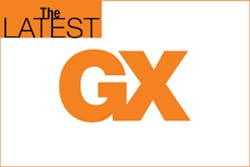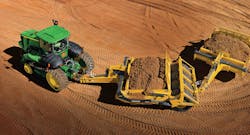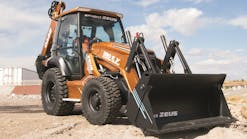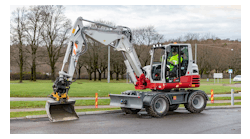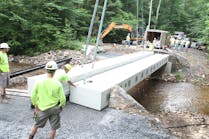NEWS From the American Rental Association: Equipment Rental Revenue Set to Top $57 Billion in 2020
(Aug. 8, 2016) MOLINE, IL: The latest five-year forecast for the equipment rental industry released by the American Rental Association (ARA) projects a compound annual growth rate in revenue of 4.9 percent to reach $57.3 billion in the United States in 2020.
The numbers in the forecast, updated at the end of July, are slightly modified compared to ARA’s quarterly forecast in late April, reflecting changes in the marketplace. ARA now projects industry revenue to increase by 4.9 percent in 2016 to a record $47.6 billion and to grow another 4.6 percent in 2017 to reach $49.8 billion.
The new forecast for the first time extends the projections to 2020, showing steady revenue growth from 2016 through 2020 of between 4.6 percent and 5 percent each year.
“This forecast shows the strength of the industry and the ability of those in equipment rental to quickly react to market changes to maintain growth and reinforce the value of renting to their customers,” says Christine Wehrman, ARA’s CEO and executive vice president.
“The ARA Rental Market Monitor™ service is updated each quarter to provide subscribers with up-to-date information to help manage their businesses, but the updates also have shown over at least the last year how stable the equipment rental industry is today and how it continues to grow by adapting to change,” she says.
“While the forecast has been adjusted to reflect changing market conditions, equipment rental is growing at more than double the rate of GDP growth and that is a good sign for the industry,” says John McClelland, ARA’s vice president for government affairs and chief economist.
Scott Hazelton, managing director, IHS Economics, the economic forecasting firm that compiles data and analysis for the ARA Rental Market Monitor as part of a partnership with ARA and Rental Management, says economic growth in the first half in the United States has not been as strong as previously expected because of uncertain growth overseas and the increasing value of the dollar.
“This also has been acerbated by uncertainty surrounding future policy direction from a muddled presidential campaign season. However, construction remains strong, particularly in the residential sector, both new and home improvements. While nonresidential growth is slowing, we remain on track for another year of solid gains and consumer spending also remains strong. The slight adjustment in the forecast growth reflects the weaker view for U.S. energy and manufacturing, while the still strong growth reflects the fact that the economic and construction fundamentals remain positive,” Hazelton says.
The biggest change to the new forecast concerns Canada. Instead of projecting a decrease in total rental revenues in 2016 as it did in April, the ARA Rental Market Monitor now forecasts a 0.8 percent increase to $4.976 billion and total rental revenue in Canada is expected to grow at a compound annual growth rate of 4.2 percent over the 2016 to 2020 period.
While construction spending in Canada has been weak in 2016, resulting in the near flat equipment rental revenues, real residential and nonresidential construction are expected to rebound in 2017 and beyond, leading to a more positive forecast with equipment rental revenue in Canada expected to reach $5.859 billion in 2020.